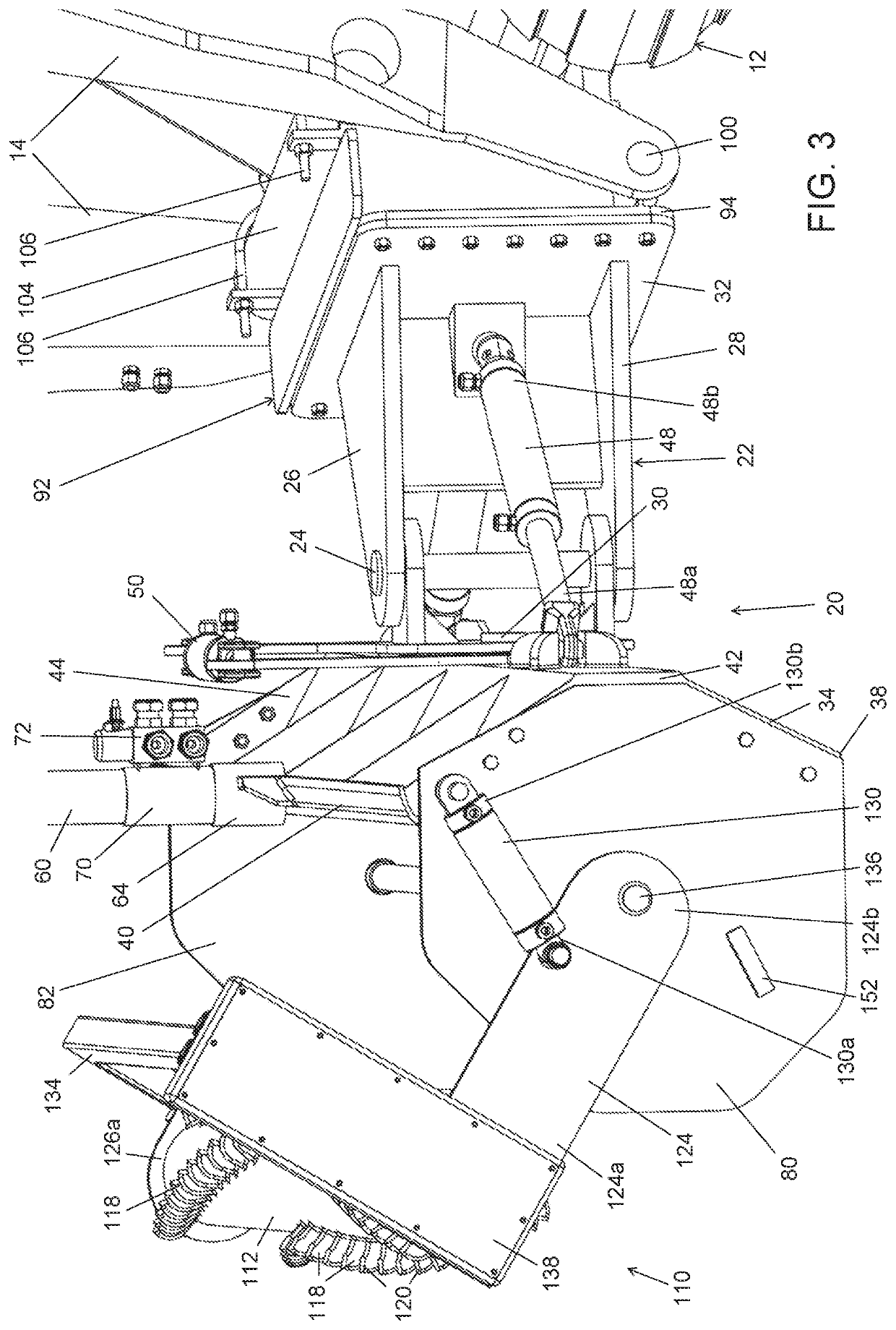Grading System
a grading system and grading technology, applied in the field of earth moving equipment, can solve the problems of limited ground cutting ability, insufficient control of the blade to permit accurate automated control, and limit the ability to achieve the intended goal of fine grading, so as to improve stiffness, improve performance, and reduce bounce
- Summary
- Abstract
- Description
- Claims
- Application Information
AI Technical Summary
Benefits of technology
Problems solved by technology
Method used
Image
Examples
Embodiment Construction
[0031]Referring generally to FIGS. 1-13, it will be appreciated that grading systems of the present disclosure generally may be embodied in numerous configurations. Indeed, the teachings within this disclosure present embodiments that provide significant advantages over prior art grading systems, and in some instances with optional alternative structures.
[0032]FIGS. 1-12 show one or more variations of a first example embodiment of a grading system 10 for connection to a vehicle 12 having vertically movable arms 14. The vehicle 12 preferably is constructed as a track vehicle, such as a skid steer vehicle that may be available from a number of different manufacturers of commercial construction equipment. It will be appreciated that the grading system 10 may be mounted on a wheeled vehicle, although this would not be quite as desirable as mounting on a track vehicle, because a wheeled vehicle generally would not be steady on the ground as a track vehicle.
[0033]The grading system 10 sho...
PUM
 Login to View More
Login to View More Abstract
Description
Claims
Application Information
 Login to View More
Login to View More - R&D
- Intellectual Property
- Life Sciences
- Materials
- Tech Scout
- Unparalleled Data Quality
- Higher Quality Content
- 60% Fewer Hallucinations
Browse by: Latest US Patents, China's latest patents, Technical Efficacy Thesaurus, Application Domain, Technology Topic, Popular Technical Reports.
© 2025 PatSnap. All rights reserved.Legal|Privacy policy|Modern Slavery Act Transparency Statement|Sitemap|About US| Contact US: help@patsnap.com



